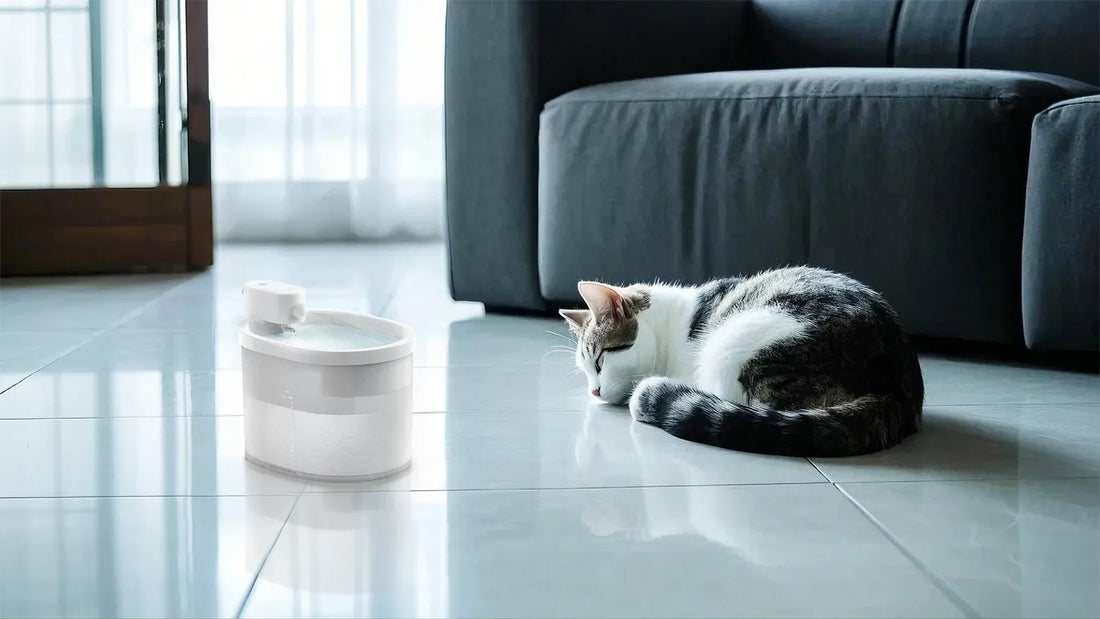Have you ever walked into your kitchen or living room, only to find your cat peeing in the water bowl? This bizarre behavior can leave even the most experienced cat owners scratching their heads. While it may seem like a random act, there are several reasons why your feline friend might be doing this. Understanding the underlying causes is the first step toward addressing the issue and ensuring your cat's well-being.
Health Issues That Could Be the Culprit
One of the most common reasons cats pee in their water bowls is due to health problems. Urinary tract infections (UTIs), bladder stones, or kidney issues can cause discomfort and confusion, leading your cat to associate the water bowl with a place to relieve themselves. If your cat is experiencing pain while urinating, they might seek out a soft, familiar surface like the water bowl to ease their discomfort.
Another health-related cause could be diabetes or kidney disease, both of which can increase thirst and urination frequency. In such cases, your cat might not make it to the litter box in time, resulting in accidents near the water bowl. If you notice any changes in your cat's drinking or urination habits, it's essential to consult a veterinarian for a thorough examination.
Behavioral Reasons Behind the Behavior
Sometimes, the issue isn't medical but behavioral. Cats are creatures of habit, and any disruption in their environment can lead to stress or anxiety. Moving to a new home, introducing a new pet, or even rearranging furniture can trigger unusual behaviors like peeing in the water bowl. Cats may also do this to mark their territory, especially if they feel threatened by other animals in the household.
Additionally, some cats may have a preference for certain textures or surfaces. If your cat finds the water bowl's material or shape appealing, they might choose it as an alternative to the litter box. This is more common in cats who have had negative experiences with their litter boxes, such as being startled while using them or associating them with punishment.
Environmental Factors to Consider
The placement and cleanliness of your cat's litter box can also play a significant role in this behavior. If the litter box is too far from their usual resting area or is not cleaned regularly, your cat might seek out a more convenient or cleaner spot to relieve themselves. Similarly, if the litter box is too small or has high sides, it might be uncomfortable for your cat to use, prompting them to find an alternative.
Another environmental factor to consider is the type of litter you're using. Some cats are picky about the texture or scent of their litter and may avoid the box altogether if they don't like it. Experimenting with different types of litter can help you find one that your cat prefers and reduce the likelihood of accidents.
How to Address the Problem
If your cat is peeing in the water bowl, the first step is to rule out any underlying health issues. Schedule a visit to the vet to ensure your cat is in good health and to address any medical concerns. Once health issues are ruled out, you can focus on behavioral and environmental factors.
Start by evaluating the placement and cleanliness of your cat's litter box. Ensure it's in a quiet, accessible location and is cleaned daily. If you have multiple cats, provide one litter box per cat, plus an extra one, to prevent competition and reduce stress. Experiment with different types of litter to find one that your cat prefers.
If stress or anxiety is the root cause, try to identify and address the source of your cat's discomfort. Provide plenty of hiding spots, scratching posts, and toys to help your cat feel secure and entertained. In some cases, pheromone diffusers or calming supplements can help reduce anxiety and improve your cat's behavior.
Preventing Future Incidents
To prevent your cat from peeing in the water bowl in the future, consider making a few changes to their environment. Place the water bowl in a different location, away from their litter box and resting areas. You can also try using a water fountain, as some cats prefer running water and may be less likely to use it as a toilet.
Finally, be patient and consistent in your approach. Changing your cat's behavior takes time, and it's essential to remain calm and supportive throughout the process. With the right combination of medical care, environmental adjustments, and behavioral training, you can help your cat overcome this unusual habit and maintain a happy, healthy home.
If you're still puzzled by your cat's behavior, don't hesitate to seek advice from a veterinarian or a feline behaviorist. They can provide personalized recommendations and help you understand your cat's unique needs. Remember, every cat is different, and what works for one might not work for another. By taking the time to understand your cat's behavior and addressing the root cause, you can create a more harmonious living environment for both you and your furry friend.













